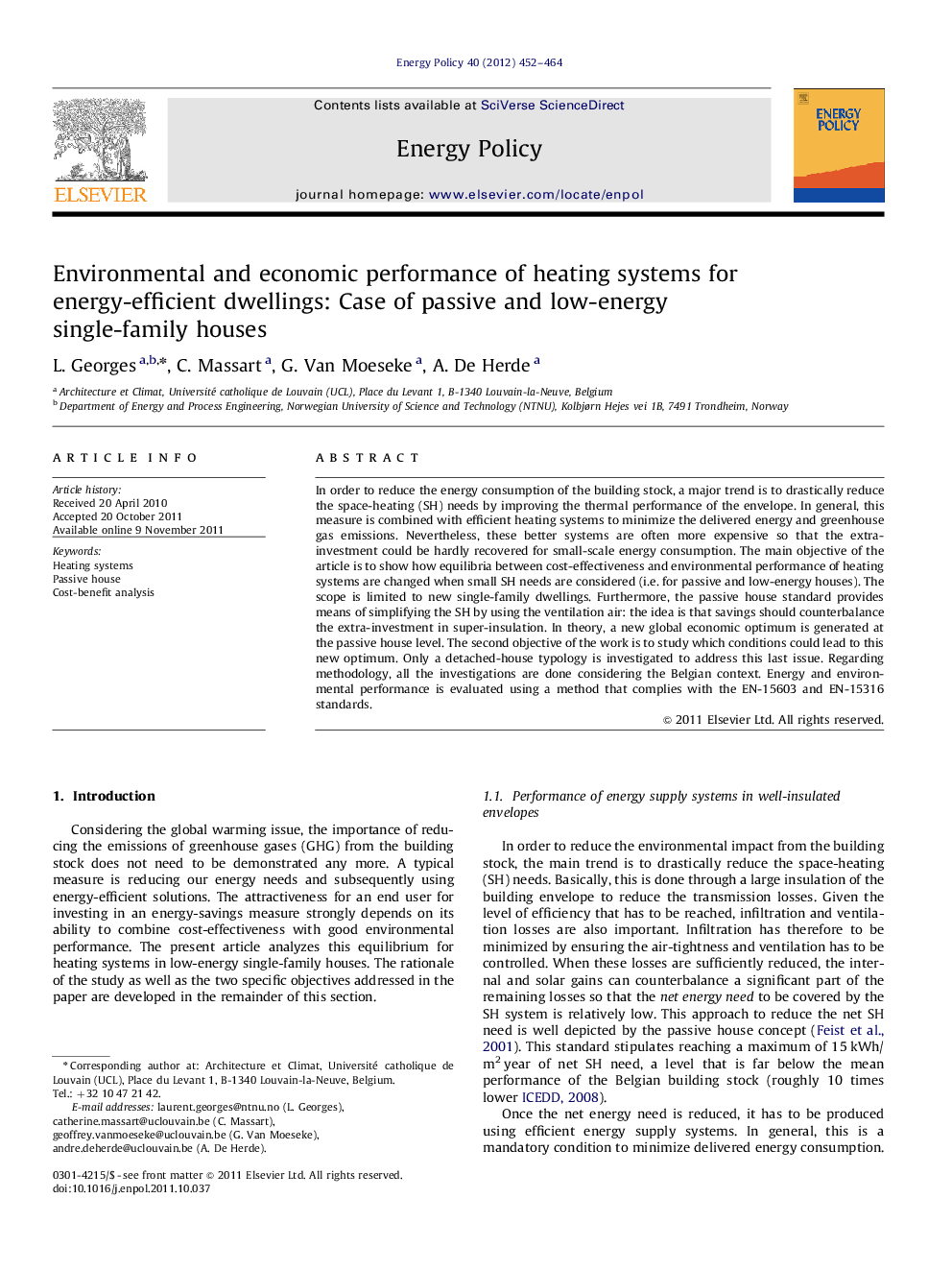| Article ID | Journal | Published Year | Pages | File Type |
|---|---|---|---|---|
| 993188 | Energy Policy | 2012 | 13 Pages |
In order to reduce the energy consumption of the building stock, a major trend is to drastically reduce the space-heating (SH) needs by improving the thermal performance of the envelope. In general, this measure is combined with efficient heating systems to minimize the delivered energy and greenhouse gas emissions. Nevertheless, these better systems are often more expensive so that the extra-investment could be hardly recovered for small-scale energy consumption. The main objective of the article is to show how equilibria between cost-effectiveness and environmental performance of heating systems are changed when small SH needs are considered (i.e. for passive and low-energy houses). The scope is limited to new single-family dwellings. Furthermore, the passive house standard provides means of simplifying the SH by using the ventilation air: the idea is that savings should counterbalance the extra-investment in super-insulation. In theory, a new global economic optimum is generated at the passive house level. The second objective of the work is to study which conditions could lead to this new optimum. Only a detached-house typology is investigated to address this last issue. Regarding methodology, all the investigations are done considering the Belgian context. Energy and environmental performance is evaluated using a method that complies with the EN-15603 and EN-15316 standards.
► Cost-benefit analysis is performed without incentives and is based on the Belgian market. ► Equilibria between cost-effectiveness and environmental performance of heating systems are changed for very low-energy houses. ► The space-heating simplification at the passive house level can hardly produce a new global economic optimum.
